
P: (08)9965 0697 F: (08)9964 7528
News
Medical Observer - We’re not all the same Feb 26th, 2015

‘One size fits all’ is doomed to failure, so weight loss strategies must be tailored.
IN THE classic 1979 Monty Python movie, The Life of Brian, the lead character, Brian, tells the swarming masses, “You’re all individuals”, to which the group responds as one, “Yes, we’re all individuals”.
The fact is, we are indeed all individuals and respond differently to different pharmaceutical and lifestyle prescriptions — weight loss being a great example.
But does this mean we need a separate program for all three million overweight or obese adult Australians? And if not, how do we individualise without over-individualising?
The first law of thermodynamics states that energy is neither gained nor lost, it just changes form.
We’re told that this is immutable. And yet change the energy balance (food in/exercise out) of 1000 people in exactly the same way and you’ll get a variation in weight loss from nothing to more than the loss predicted through any calorific formula. The question is, why?
The simple answer is that the first law is based on a physics formula, which is linear (e.g. weight = energy in — energy out).
This only works approximately in a biological system.
COUNTING CALORIES
Feedback in a living organism, such as through changes in metabolic rate, hunger levels and a range of other factors, makes generic lifestyle prescriptions such as diet and exercise, just that — generic, with huge variations around the mean.
The implications of this are profound: “A calorie is no longer a calorie.”
As the actual value of heat energy can be influenced differently by feedback in individuals, any attempt to prescribe or measure weight gain or loss by counting calories is bound to be flawed.
Using a systems theory model can complicate the issue but may be necessary.
OBESITY DRIVERS
In the UK, the Foresight Commission, a body set up to examine the future, published a complex diagram of known drivers of obesity1 which has come to be used by obesity lecturers around the world to draw a laugh. You can see it at http://www.foresight.gov.uk/Obesity/12.pdf.
Prescribing a set diet and exercise program alone to help a patient lose weight may work brilliantly for some, for whom these are the immediate divers, but it may not work at all for others.
What’s the alternative? Ultimately, a computer program including genetic analysis might reduce the variability in response. But this is some way off. So what to do in the meantime?
PERSONALITY TYPE
American obesity researcher and clinician Dr Robert Kushner has had a crack at this by looking at different personality types based on types of eaters, exercisers and stress managers.
In his book, Dr Kushner’s Personality Type Diet2 — which would normally be discarded as a ‘fad’ book on the basis of its title — Kushner developed a screening system to categorise people into six different types of eaters, exercisers and stress responders.
Kushner’s eating personality types are classified in such non-scientific categories as ‘unguided grazer’, ‘night-time nibbler’, ‘convenient consumer’, ‘fruitless feaster’, ‘mindless muncher’ and so on. Despite the appeal to a public audience, each does have some scientific basis, which is added to by Kushner’s respectability as a world-class obesity researcher.
TAILORED STRATEGIES
Breaking the weight loss responder into different groups like this, according to Kushner, can help increase the prospects of success on a weight loss program.
This is not rocket science — yet! But individual targeting in prescription, just as in marketing of consumer products, points to the way of the future.
A good clinician might do this intuitively but the increasing complexities of the modern world make it more and more difficult to do so.
Kushner’s approach is a possible way of narrowing down the individual differences in weight loss response.
But, given that there are a number of other drivers that can influence lifestyle, including sleep, the environment and relationships, don’t expect any major breakthroughs in the clinical response to weight loss.
Next Dietitian Talk Friday 6th March 2015 Feb 23rd, 2015
Catherine Dumont's next Dietitian Talk is on Friday 6th March, 12 noon at Central West Health & Rehabilitation in Geraldton. This talk is free for gym members and people who are completing Central West Health & Rehab's Diabetes Management and Chronic Disease Prevention programs.
This talk covers: 
- Healthy Eating Habits
- Glycemic Index
- Fat Types and Cholesterol
- Recipe Modification Label Reading
A 'Real and Substantial' Connection to Employment Feb 21st, 2015
Kathleen Kay v Woolworths Limited [2014] NSWWCC 365 (1 October 2014)
In the following case, a Woolworths Customer Services Manager, who worked predominately daytime and afternoon shifts, bought proceedings to the NSW Arbitrator. She suggested that the insurer’s decision to reject her claim was inappropriate as while her injuries did not happen at work, they were ‘substantially connected’ to her employment.
On the week of the workers accident, the shop’s floors were being stripped and resealed by cleaners. The works took place overnight, and required a manger to be present. In the afternoon of Wednesday 17 October 2012, the worker was told by her employer that she was required to work the following Thursday night to supervise the cleaners. The worker was unable to sleep before the shift due to a dentist appointment.
Upon completion of her shift at 8am on Friday, the worker had been awake for over 24 hours. On her journey home, she fell asleep at the wheel, causing her to veer onto the wrong side of the road and collide with an oncoming vehicle.
The medical evidence confirmed sleep deprivation was as a significant causal factor in the accident. The worker subsequently made a claim for workers compensation, which was declined by the insurer on the basis that there was no ‘real and substantial’ connection between her employment and the accident.
Considering a case where it was held that a ‘real and substantial’ connection does not necessarily require a worker’s employment to have caused the accident, the Arbitrator rejected the insurer’s submissions, and held that the worker satisfied the requirement set out in section 10(3A).
The Arbitrator highlighted that this section merely requires that there be a ‘real and substantial’ connection between the employment and the accident; meaning that there can be several factors involved.
The worker was required by her employer, at short notice, to complete the night shift. Her inability to properly prepare herself physically and mentally beforehand meant she was sleep deprived, which the Arbitrator accepted to be a significant factor in her accident.
Importantly, the Arbitrator held that in the circumstances, the worker’s risk of injury “was not outside the control of the employer.” The employer did not conduct any risk assessment as to whether it was safe for the worker to work the night shift, at short notice, without any substantial prior experience working the shift, and without having slept beforehand.
It was held that the employer, despite observing the worker’s tiredness at the completion of her shift, failed to determine how much sleep the worker had gotten in the preceding 24 hours. Arbitrator suggested that the employer, in order to avoid the risk, could have simply asked how the worker was feeling and offered the worker a taxi voucher.
Mal Chronique - 7 exercise tips for people with chronic pain Feb 19th, 2015
 Incorporate exercises in everyday life – take the stairs whenever you can, get up more often and do tasks around the home
Incorporate exercises in everyday life – take the stairs whenever you can, get up more often and do tasks around the home- Choose exercises that you enjoy, whether its swimming, yoga, walking, or weights
- Add a component of aerobic exercise to your programs (swimming, walking, stationary bike)
- Stretching and breathing exercises are great additions to your program as they improve blood supply and nutrients to the joints, reduce your risk of injury, improve your balance, and reduce stress in muscles
- Avoid exercises which cause pain, though some discomfort is okay
- Avoid the boom-bust approach, start slowly and gradually increase your program (increasing volume before intensity)
- Be consistent from day to day, avoid good day and bad day behaviour
5 Steps to a Better Back Feb 19th, 2015
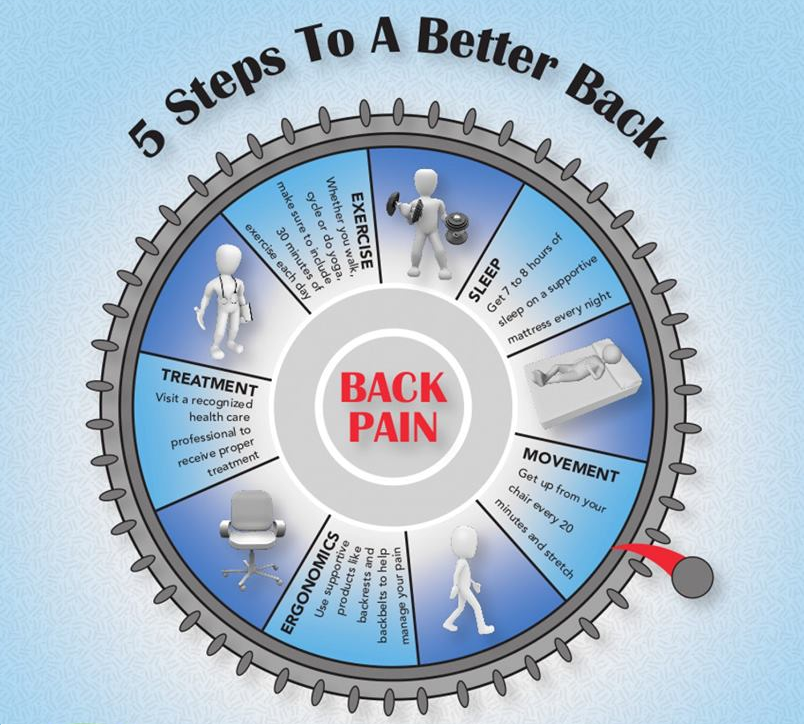
Mal Chronique - Chronic Pain and Exercise; Evidence and Benefits Feb 19th, 2015
Chronic pain involves symptoms of prolonged pain and fatigue, leading to an inactive lifestyle. However being inactive can increase your levels of pain and fatigue, leading to deconditioning of the body. Deconditioning can make you more prone to injury and put you at risk of more severe health problems.
Breaking the pain cycle can be difficult, especially if your body has been in pain for quite some time. Sometimes people feel their attempts at exercise cause more pain and lead to flare ups, avoiding exercise and turning to rest. Even if there is discomfort in the beginning, retraining your body and remaining active will be beneficial for your health and wellbeing in the long term.
Best Evidence for Chronic Pain and Exercise
Exercise works best when delivered as part of a multi-factorial approach. This includes sound knowledge and education about your condition, physical activity and the pain experience. The body and mind love movement, where gradually becoming more active is essential for treating and managing chronic pain. Recent evidence shows people with chronic pain reported moderate exercise decreases pain, fatigue, stress and symptoms. It also improved perceptions of health, physical function and aerobic fitness. Other studies have shown low intensity exercises such as walking and pool exercises improved joint and muscle pain, improving the ability to carry out daily activities.
Exercise-induced Hypoalgesia
Recent studies have shown exercise inhibits descending pathways. Descending pathways can inhibit or facilitate transmission of noxious (painful) information, and are therefore of major importance in pain modulation. Studies demonstrate a reduction in pain sensitivity during and following exercise, in both the healthy and chronic pain population.
Aerobic exercises (running, cycling etc) produce exercise-induced hypoalgesia, particularly when performed at moderate to high intensities for longer periods. This is also true for isometric exercises (static muscle contraction), when performed at either low or high intensities.
Benefits of Exercise
- Joints become better lubricated and glide easier
- Nerves and discs of the spine get their required nutrients
- Muscles become stronger and fatigue less quickly
- The nervous system winds down promoting relaxation
- Increased levels of energy, improving mood and helping with anxiety and depression
- Your body produces Endorphins - your own pain relieving medication!
- Improves efficiency of the heart, controls blood sugar levels, and improves your ability to burn fat
Rhianne Turner (Physiotherapist)
A Foundational Model for Good Work Design Jan 20th, 2015
Principles of good work design are a key element of the Safe Work Australia members collaborative project Good Work through Effective Design. This project contributes to the Australian Work Health and Safety Strategy 2012-2022 and the national action area Healthy and Safe by Design. Particular focus has been placed on achieving the strategic outcome of 'eliminating or minimizing risks and hazards by ensuring all work, work processes and systems are well designed'.
Comcare and Workplace Health and Safety Queensland have been tasked with phase one of the Good Work through Effective Design project, to produce a set of principles for good work design. Phase two of the project is to promote good work and effective design, through case studies, education and other guidance materials.
WHAT IS GOOD WORK?
‘Good work’ is healthy and safe work where the hazards and risks from the work have been eliminated or minimised, as far as reasonably practicable, through the process of design. Good work is designed to manage the structure of tasks, demands, supports, and work processes to optimise human performance, organisational productivity and job satisfaction.
ELEMENTS OF GOOD WORK DESIGN
When making decision about work tasks, activities, and responsibilities, there are typically four interrelated elements that are important. These are:
- physical elements—aspects of the work environment or context that creates physical or physiological demands on the human body, for example physical hazards, chemical hazards and biological hazards.
- biomechanical elements—aspects of the work that include hazardous manual tasks and the biomechanical risk factors that leads to musculoskeletal disorders, for example force, vibration and movement.
- cognitive elements—aspects of the work that create demands on the human mental capacity, for example attention, mental workload and complexity.
- psychosocial elements—social, psychological, and organisational aspects of work that place demands on human capacities, for example work demands, job control, supervisor/peer support, role variables, managing relationships, rewards and recognition, management of change an organisational justice.
Risk factors are interrelated and interdependent so focusing on one or two factors in isolation will likely be ineffective as a strategy. The interaction amongst elements, and their co-occurrence, means that a holistic approach should be adopted when evaluating work, and when designing solutions.
There are many models that are applied in the context of designing good work. The report reviewed the following key approaches and perspectives from the research evidence:
- Work Design-Specific
- Risk Management
- Continual Improvement Process
- Health Promotion
- Change Management
- Human Factors Engineering
Mal Chronique - Chronic Pain Explained Jan 13th, 2015
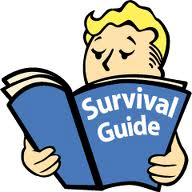
Chronic pain refers to pain that is experienced beyond expected healing timeframes, for example low back pain, neuropathic pain, neck pain, post operative pain, shoulder pain.
You’re not alone - 1 in 5 Australians are affected by chronic pain.
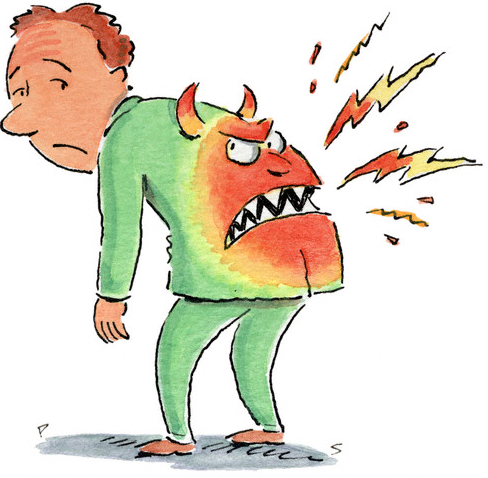 The relationship between pain and injury: Pain ≠ injury
The relationship between pain and injury: Pain ≠ injuryPain is very useful when we have an acute injury. For example, with a sprained ankle our brain sends signals of pain to cause us to limp and offload the ankle, ultimately allowing the inflammation to settle and promote healing. This is great! However in chronic pain, these signals are not so helpful.
The relationship between pain and injury becomes uncoupled in the chronic pain experience, where pain is not a reliable predictor of the severity of the injury. A multitude of other factors play a role in the chronic pain experience. The longer pain persists, the more important these ‘non-tissue related’ factors become in driving the pain experience. Pain can even occur with no identifiable cause. Take for example phantom limb pain post-amputation– pain can persist in the absence of tissue injury and even in the absence of any tissue at all.
Multiple Failed Treatments
This is not uncommon in the chronic pain population, due to the complexity of a multitude of contributing factors. The most up to date evidence for treatment is to take a multi-factorial treatment approach. Treatments that have failed to deliver adequate pain relief often do so because of failure to account the multiple factors that contribute to someone’s pain. Treatment works best when delivered as part of a multi-factorial approach, including education and knowledge about your condition, physical activity and pain.
“It’s all in your head”
Those who have experienced chronic pain may have experienced a clinician who tells them “it’s all in your head”. This in fact has truth to it, because the brain is in the head and the brain tells us how much something hurts. Pain is a survival mechanism – when the body is injured nerve endings in the injured part send messages to the brain. When the brain suspects the body is under threat the brain acts to protect it by producing pain. Pain is created by the brain, but that does not make it any less real. The more times the brain uses a certain neural pathway, the easier it becomes to activate the pathway. Neurons that fire together, wire together – for example: if every time you lift a box there is pain in your back, the brain has created a pain experience with lifting boxes. We need to reshape this pain experience and lower the perceived threat.
Rhianne Turner (Physiotherapist)
Cumulative tissue damage and stress Dec 30th, 2014
MSD hazards and risk factors - US National Research Council Dec 30th, 2014
Designing Worksite Toolkit for MSD Risk Dec 30th, 2014
A toolkit should provide practical tools and strategies for workplace use in identifying hazards and assessing risk. Training materials and guidance documents to support effective implementation of the risk management process should also be included. Another key requirement in using a toolkit approach is that of worker participation.
The advantage of the toolkit approach is that it can be customised by organisations to fit into their existing policies and procedures but it offers a more holistic approach to WMSD risk management—than is currently undertaken—which is needed if adequate coverage of all hazards and risks associated with WMSDs is to be undertaken.
Figure 1 above depicts three groups of workplace hazards: external (biomechanical) loads, organizational factors, and social context; those within the latter two groups are commonly known as psychosocial hazards.
Hazards within all three categories interact with each other (shown by linking arrows) and all of these hazards can affect processes internal to individual workers (internal biomechanical loading, physiological responses) and personal outcomes (discomfort, pain, impairment, disability). As shown on the right of the diagram, individual factors influence all personal processes and outcomes. ‘Stress’ is not highlighted here, although it is implicit within ‘Physiological Responses’.
Figure 2 above highlights the interacting effects on MSD risk of ‘physical’ hazards (mainly biomechanical) and psychosocial hazards. A person’s internal ‘stress response’, as shown here, occurs when situations are experienced as stressful; it is multidimensional, with physiological and behavioural, as well as cognitive and affective dimensions, with potentially profound effects on health, including MSD risk.
The model in Figure 3 below is in accord with the above 2, however but more directly applicable to workplace risk management because it provides more specific detail concerning the wide range of work-related hazards that can combine to affect risk.
MSD risk is increased if Job and Task Demands are hazardous or excessive in relation to available Coping Resources, and that risk is also affected by Other Psychosocial Hazards. The physical hazards of manual task performance are included within Job and Task Demands, along with the cognitive and emotional demands of task performance, and the broader demands of the overall job. Coping Resources are determined both by workplace factors (support systems and resources; psychosocial and physical environment influences) and by the individual’s own capabilities. Importantly, it is the combination of these diverse variables that determines risk.
Figure 3 is a great resource for planning worksite toolkit to assist to reduce worksite MSD’s. Click for downloadable template.
Minimum requirements to reduce work-related musculoskeletal disorders Dec 30th, 2014
WMSDs are typically viewed as related to manual handling and as such risk management is targeted at addressing the physical aspects of jobs and tasks. However, effective risk management for MSD needs to accurately identify, assess and control the most relevant worksite risk factors for a particular job, not particular tasks. To determine what these risk factors are a participative systems approach is needed using hazard surveillance evidence collected from employees within a particular job.
Risk factors for WMSDs include psychosocial and physical hazards; therefore, to ensure effective WMSD risk management practice all relevant hazards must be identified and systematically controlled.
Research evaluating the effectiveness of various workplace interventions intended to reduce WMSD risk has identified the following key factors:
- A multifactorial approach–addressing psychosocial hazards concurrently with manual handling hazards;
- Participation by workers and their representatives, along with other stakeholders including supervisors and key managers, and management commitment which includes ensuring that workers have the time needed to participate in risk management processes and that risk controls are implemented as fully as practicable
Better understanding of MSD aetiology, based on current research evidence is required. One approach that would address these key requirements is a risk management toolkit.
The advantage of the toolkit approach is that it can be customised by organisations to fit into their existing policies and procedures, while still offering a more holistic approach to WMSD risk management.
Next- Designing Worksite Toolkit for MSD Risk
Where should risk management strategies be targeted? Dec 29th, 2014
However effective risk management for MSD needs to accurately identify, assess and control the most relevant worksite risk factors for a particular job. To determine what these risk factors are a participative systems approach is needed using hazard surveillance evidence collected from employees within a particular job.
Target Job Levels
The following study showed risk management strategies need to be targeted at the ‘job level’ if they are to be maximally effective (i.e. target specific job task and roles, rather than specific organisations or employment sectors).
Risk mitigation should be aimed at individual jobs to ensure maximum effectiveness in reducing MSD risk. This does not suggest that organisational influences are not critically important. In a systems approach, the influences from an organisational level play a vital role in determining a range of factors directly related to job design including safety, efficiency and effectiveness.
Be Job specific, not Task Specific
Another important distinction is the need for a job rather than a task focus, which is currently employed by many ergonomists and safety personnel. Whilst tasks were not directly examined in the current study, the problem with a focus on examining specific tasks is it fails to take account of the range of activities and demands placed on an individual. By evaluating tasks it is likely that important interactions will be not be accounted for.
The potential for interactions between hazards means that risk assessment on a hazard-by-hazard basis can be unreliable, because the effect on WMSD risk of a particular observed hazard level is likely to depend on the type and severity of other hazards experienced, that is, the combination of tasks may increase the risk of developing a WMSD.
Next- What are the Minimum Requirements
Where should we target strategies to reduce work-related musculoskeletal disorders? Dec 29th, 2014
No single or multi-dimensional strategy is generally effective across occupational settings. Therefore a degree of customisation is required for maximum effectiveness.
Both physical and nonphysical work environments should be assessed so that interventions specific to individual workplaces can be developed which in turn can lead to more definitive conclusions about changes being reached.
The relative contribution of physical and psychosocial hazards to worksite MSD development may vary between different jobs, gender and age. Even in work considered as predominately physical in nature, psychosocial factors have been associated with MSD risk.
The relative importance of particular hazards will be defined by the nature of the work, as well as the physical and cognitive demands placed on individuals. Importance will also vary greatly across different organisations and sectors. In addition, the organisational and sociotechnical context in which the organisation is operating will influence a range of workplace demands including job security, deadlines and working hours, all of which have been linked to WMSD development.
Next- Where should risk management strategies be targeted?
Infographic - Australian Workers’ Compensation Statistics, 2012–13 Dec 21st, 2014
Australian Workers’ Compensation Statistics, 2012–13 Dec 21st, 2014
The above report provides a summary of Australian workers’ compensation statistics for the 2012–13 financial year, including trends over time and an overview of time lost and compensation paid. A serious claim is a workers’ compensation claim for an incapacity that results in a total absence from work of one working week or more.
Preliminary data show there were 117 815 serious workers’ compensation claims in 2012–13, which equates to 11.1 claims per 1000 employees and 6.7 claims per million hours worked.
Injuries & musculoskeletal disorders led to 90% of serious claims in 2012–13 and the most common type was Traumatic joint/ligament & muscle/tendon injury (45%). Diseases led to 10% of serious claims and the most common type was Mental disorders (6%).
Muscular stress while lifting or handling objects caused 33% of serious claims in 2012–13p, while falls, trips & slips of a person caused 22% of serious claims. The back was the location on the body most often injured, accounting for 22% of all serious claims in 2012–13p. Other common locations were the hand, fingers & thumb (13%), shoulder (10%) and knee (9%).
Employees working as Labourers had the highest incidence rate of serious claims of all occupations in 2012–13: 27.0 serious claims per 1000 employees, more than twice the national rate. Machinery operators & drivers made 24.4 serious claims per 1000 employees. Older workers have higher median time lost from work and higher median compensation paid for their serious claims than younger workers.
Obesity by Occupation - USA Dec 19th, 2014
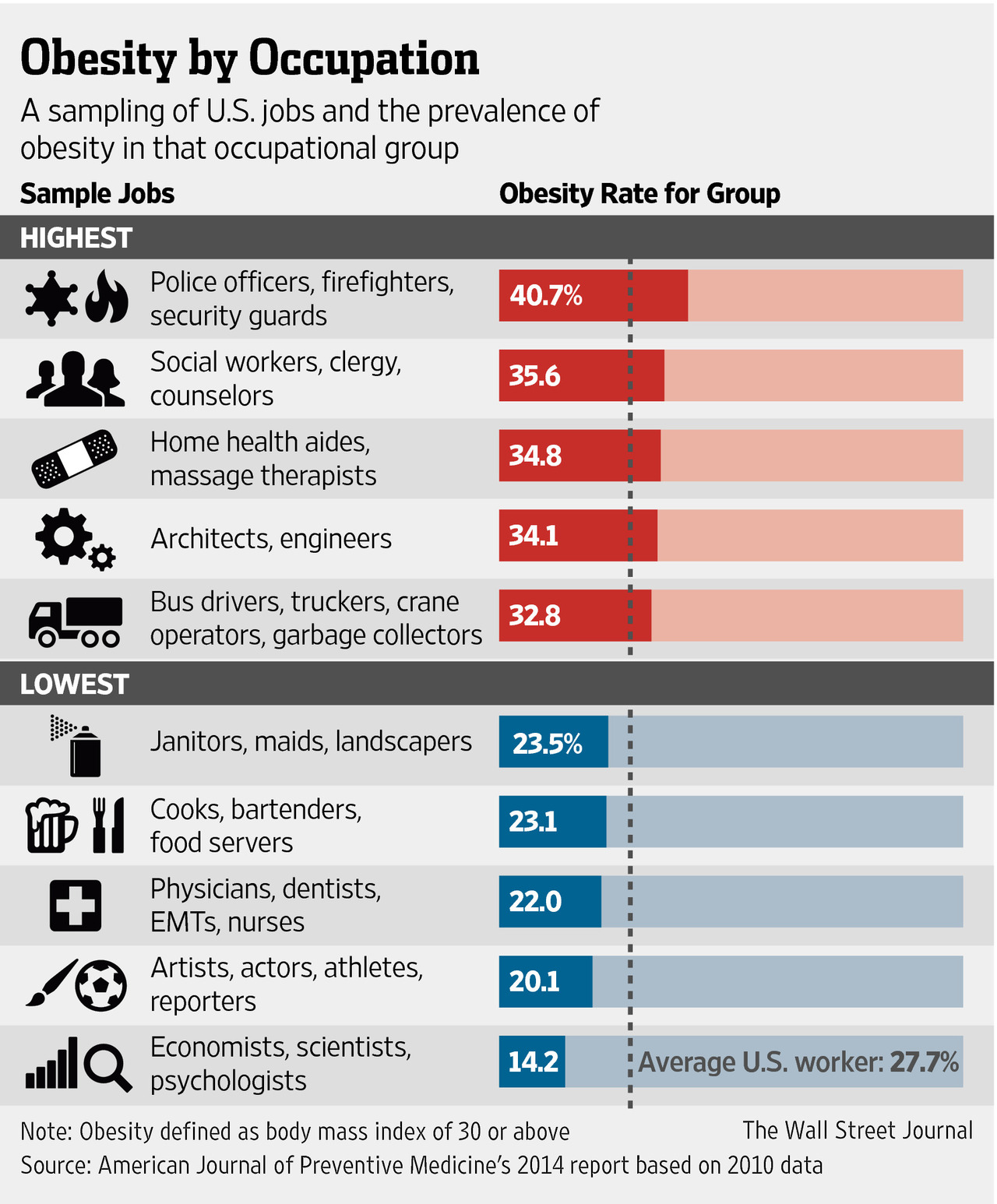
Christmas Hours Dec 10th, 2014
Image - Psychological Injury Nov 27th, 2014
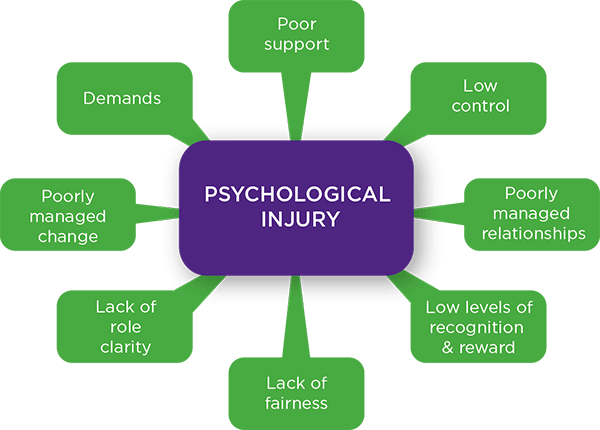
Start RTW immediately with Psycho social claims. Nov 25th, 2014
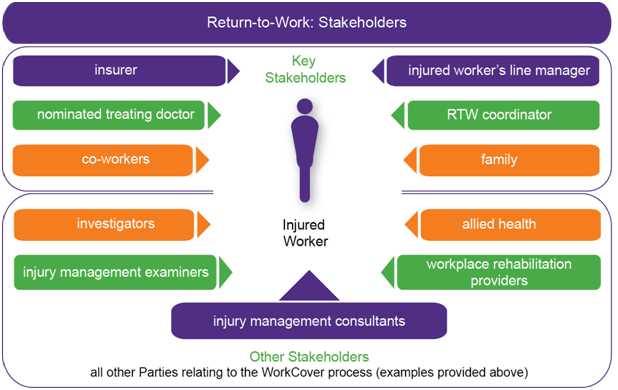 It is no secret workplace psychological injuries represent a huge burden both on the individual and their family as well and workers’ compensation schemes and society generally. Comcare reported in the 4 years to June 2010 10% of claims were attributed to ‘mental stress’ and these amounted to 35% of total claims costs.
It is no secret workplace psychological injuries represent a huge burden both on the individual and their family as well and workers’ compensation schemes and society generally. Comcare reported in the 4 years to June 2010 10% of claims were attributed to ‘mental stress’ and these amounted to 35% of total claims costs.As a result between 2007 and 2010, there were more than 17,000 ‘mental disorder’ claims at an average cost of $19,600 per claim.
Liability or Return to Work. You Can Do Both
The huge impact and potential for exacerbation with a psychological injury leads to a focus on the liability issues at the expense of managing the employee. The patient is often left to sit at home pending the investigations and not surprisingly this does little to soothe the waters.
Most workplace psychological injuries do not happen overnight but in fact can fester for some time with employees typically showing signs like erratic behaviour, disengagement and withdrawal, more unplanned absence, increased workplace conflict and deterioration in work performance. Consequently by the time a claim is made the worker is likely highly susceptible to what happens next.
The question of course is do they have a valid claim that needs to be addressed as per the appropriate channels but nonetheless you still have an employee with rights under the Fair Work Act (e.g. you cannot just sack them) you need to manage.
Stay At Work Should Be The Focus
There is lots of information about the Health Benefits of Work. Safe Work Australia also supports the Stay at Work position for mental ill health as outlined in their Work Health and Safety Strategy 2012-2022; and that is what you need to discuss with the Treating Doctor.
At times you should involve a Workplace Rehabilitation Provider sooner rather than later. Rehabilitation Consultants, as a party external to the company, brings impartiality to the table and is also skilled in complex case management.
The Right Support Is Necessary
In the event of a workplace psychological injury there is no easy or one size fits all solution and an open and sensitive approach is necessary to understand the issues for the injured worker along with those of the employer. It is important to establish communication and commence the return to work discussion.
With the right support time off with a psychological injury need not be seen as standard or essential practice and your challenge is to make that happen.
Presumption 3: methods and tools for the assessment and management of psycho social risks are not available. Nov 25th, 2014
Survey’s of various Employers, disappointingly have found that only a minority of enterprises inform their employees on psychosocial risks, let alone take appropriate actions to tackle them.
Lack of awareness, lack of resources, and lack of technical support, guidance and expertise were key needs in this area that were identified irrespective of enterprise size, sector or country.
An interesting recent development in this area is the launch of two standards.
The first was launched by the British Standards Institution in 2011 and it is the first national guidance standard on the management of psychosocial risks in the workplace.
The second was launched as a national standard on psychological health and safety in the workplace in Canada in 2013.
Is psychosocial risk prevention possible?
The ultimate question is about the risks each of us is willing to take – as an employee, manager, policy maker, individual. The answer will depend on the context each of us finds ourselves in, associated pressures, needs, and values.
A policy maker might be clear on the available evidence on the impact of psychosocial risks but might choose to focus policies on reaction and not prevention because of economic and/or political pressures.
A line manager might understand that putting more pressure on her employees will challenge their well-being, but might choose to go ahead with the plan of meeting additional targets to satisfy her superiors and contribute to the company’s survival.
An employee might realize that working 60 h per week will make them ill and limit the time spent with his family but might choose to do so to have an income in a country with high unemployment.
In all these cases, each individuals decision can be justified although, on the basis of available knowledge, each situation will not be sustainable and will perpetuate problems at different levels.
When you can lawfully discriminate based on age? Nov 24th, 2014
 While an employer is unable to discriminate against a person based on their age, work health and safety laws in Australia and other jurisdictions also require employers to provide a "safe system of work". For example, section 19 of the Work Health and Safety Act 2011 states that the "primary duty of care" is to "ensure, so far as is reasonably practicable, the health and safety of workers" by, among other things, "provision and maintenance of safe systems of work".
While an employer is unable to discriminate against a person based on their age, work health and safety laws in Australia and other jurisdictions also require employers to provide a "safe system of work". For example, section 19 of the Work Health and Safety Act 2011 states that the "primary duty of care" is to "ensure, so far as is reasonably practicable, the health and safety of workers" by, among other things, "provision and maintenance of safe systems of work".Therefore, if an employee cannot fulfil the inherent requirements of a job due to age related physical or mental change, an employer is ‘obligated’ to, for lack of a better word, discriminate based on age.
To ensure that such discrimination is lawful, you must:
- be sure that the person cannot perform the essential tasks of the job; and
- determine that any inability to perform the essential tasks of the job is due to the person’s age , i.e. not because they lack training, qualifications or experience.
Controlling the incidence of work-related injuries is economically important and important for the individual employee. Injuries occurring on the job can result in life-altering consequences to workers who depend on their physical well being for their livelihood.
Only 2% of individuals with back injuries who have been off work for more than 2 years will ever return to gainful employment. The loss of the ability to work can have a devastating consequence on not only the injured individual but also his or her entire family.
We have significant experience providing and designing pre-employment physical assessments. Contact us for more.
Court Rules on Age Discrimination Case! Nov 24th, 2014
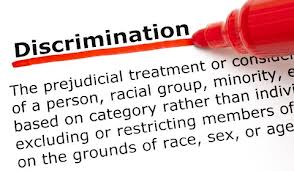 On the 8th of April 2014, the Federal Circuit Court in Brisbane ruled on the Fair Work Ombudsman's first litigation relating to discrimination on the grounds of age.
On the 8th of April 2014, the Federal Circuit Court in Brisbane ruled on the Fair Work Ombudsman's first litigation relating to discrimination on the grounds of age.The 65-year-old employee began working for his employer in late 1996. His duties included taking orders, serving dishes and water, setting tables and greeting and assisting customers when asked to by the manager.
The employee took long service leave in April, 2011. When he was due to return to work, his employer told him that he would work part-time.
The employee subsequently met with his employer and raised questions about a number of issues, including his pay, later putting his concerns in writing. Shortly after, he received a letter drafted by the company's accountant informing him of the company's plans to terminate his employment on his 65th birthday. The accountant who drafted the letter had no workplace relations experience or training.
The letter stated that it was "the policy of the company that we do not employ any staff that attains the retirement age, which in your case is 65 years".
In his written response to the company, the employee stated that the termination of his employment was "irrefutably an act of blatant discrimination".
"It must be pointed out, my effectiveness as a food and beverage attendant when I turn 65 is no less than my effectiveness at the age of 64," he said.
After the company reaffirmed its position and advised the employee it did not wish to enter into further correspondence with him, the employee lodged a complaint with the Fair Work Ombudsman.
The Fair Work Ombudsman placed the matter before the Court. Following a subsequent investigation and litigation, the employer was penalised a total of $29,150 for contraventions of age discrimination and record-keeping laws.
- The company was fined $20,790
- Its joint directors and equal shareholders, were also penalised a further $4180 each.
- Judge Michael Burnett also instructed the employer to pay $10,000 compensation to the former employee.
Fair Work Ombudsman Natalie James says discrimination against employees on the grounds of age is unlawful and the outcome of the case serves as a warning to employers that it won't be tolerated.
"Limiting employment opportunities of workers because of their age is totally unacceptable and we take such conduct very seriously because of the impact it has on individual workers and the labour market generally," Ms James said.
Under the Fair Work Act, it is unlawful to discriminate against employees on the grounds of pregnancy, race, colour, sex, sexual preference, age, physical or mental disability, marital status, family or carer responsibilities, religion, political opinion, national extraction or social origin.
How Common
Since 2009, the Fair Work Ombudsman has received more than 80 complaints relating to age discrimination, making it among the top-five types of discrimination investigated by the Agency.
The majority of age discrimination complaints come from mature-age workers, with workers aged as young as their 40s having complained they have been discriminated against because of their mature age.
The Fair Work Ombudsman has received age discrimination complaints from mature-age workers in a range industries, with the accommodation and food, health care and social assistance, and retail industries prominent.
Reference: http://www.fairwork.gov.au/About-us/news-and-media-releases/2014-media-releases/April-2014/20140407-theravanish-penalty
Presumption 2: the case for prioritization and management of psychosocial risks is not clearly defined Nov 18th, 2014
 Several studies have shown the impact of psychosocial risks, work-related stress, bullying and harassment on individual health, safety and well-being, organizational performance, and societal health and prosperity. Studies document elevated odds ratios of fatal or non-fatal cardiovascular events amongst those reporting job strain, effort-reward imbalance or organizational injustice. Overall, risks are at least 50% higher amongst those suffering from stress at work compared in comparison to those who are not.
Several studies have shown the impact of psychosocial risks, work-related stress, bullying and harassment on individual health, safety and well-being, organizational performance, and societal health and prosperity. Studies document elevated odds ratios of fatal or non-fatal cardiovascular events amongst those reporting job strain, effort-reward imbalance or organizational injustice. Overall, risks are at least 50% higher amongst those suffering from stress at work compared in comparison to those who are not.In addition, the majority of cardiovascular risk factors can be linked to adverse psychosocial work environments in terms of job strain and effort-reward imbalance. In particular metabolic syndrome, type II diabetes, hypertension, obesity, health-adverse behaviours and markers of dysregulated autonomic nervous and endocrine system activity.
Other studies have shown the direct and indirect effect of a poor psychosocial work environment on absenteeism, productivity, job satisfaction, and intention to quit. A reduction in physical and psychological health through the experience of stress can cause suboptimal performance that may lead to accidents and to other quality problems and reduced productivity, thereby augmenting operational risks. In addition, studies have suggested that between 50% and 60% of all lost working days have some link with work-related stress.
Clearly there is a data making the ‘economic’ case for psychosocial risk management. Astonishingly, there still appears to be resistance from businesses to prioritize it. This may be partly attributable to the way psychosocial risk management is understood; that is, as an approach to alleviate negative outcomes but not necessarily one to capitalize on opportunities and resources for prevention. This perception might stem from the approach employed by some key stakeholders to take a ‘reactive’ approach to dealing with psychosocial risks rather than providing some resources to proactive preventative strategies.
Businesses deal with risk and risk management routinely. Risk management is used from the development of business strategy to the execution of daily operations. However, psychosocial risk management concerns work organization, design and management. It must be embedded in business operations and not viewed as an add-on. Such a conceptualization of psychosocial risk management would also reduce resistance and stigmatization in dealing with mental health in the workplace and promote well-being and performance.
Is psychosocial risk prevention possible? Nov 18th, 2014
The following paper explores why this is still the case by discussing three presumptions in relation to the current state of evidence in this area.
Presumption 1: there is no clear definition and understanding of psychosocial risks by key stakeholders and businesses.
Psychosocial hazards are aspects of work organization, design and management that have the potential to cause harm on individual health and safety as well as other adverse organizational outcomes such as sickness absence, reduced productivity or human error. They include several issues such as work demands, the availability of organizational support, rewards, and interpersonal relationships, including issues such as harassment and bullying in the workplace. The types of issues employers are asked to consider include workload, work schedules, role clarity, communication, rewards, teamwork, problem-solving, and relationships at work.
Can any business flourish without effectively managing these issues? And if there is clear evidence that not managing these issues effectively can lead to poor employee health, presenteeism, absenteeism, human error and reduced productivity why is there resistance when it comes to health and safety legislation in this area?
Perhaps difficulties in understanding arise from the ‘traditional’ perspective in health and safety, based on risk management. Businesses deal with ‘risk’ and ‘risk management’ routinely in areas such as finance, strategy, and operations (among others). As such, the principles of risk management, which are based on being proactive, are not at all foreign to them. However, the same cannot be claimed for other key stakeholders involved in psychosocial risk management, such as occupational health services.
Experts working in occupational health services traditionally have a ‘reactive’ perspective to psychosocial illness, supporting individuals and organizations deal with problems they experience, and not designing a work environment that will prevent them from occurring. The approach employed to deal with psychosocial risks is very much focused on ‘mending harm’ and not sufficiently on prevention through managing risks.
Psychosocial risk management should not be approached solely through a health and safety perspective (and not solely from a human resource management perspective either since this often lacks prioritization) but from a strategic perspective both at organizational and at policy level.


